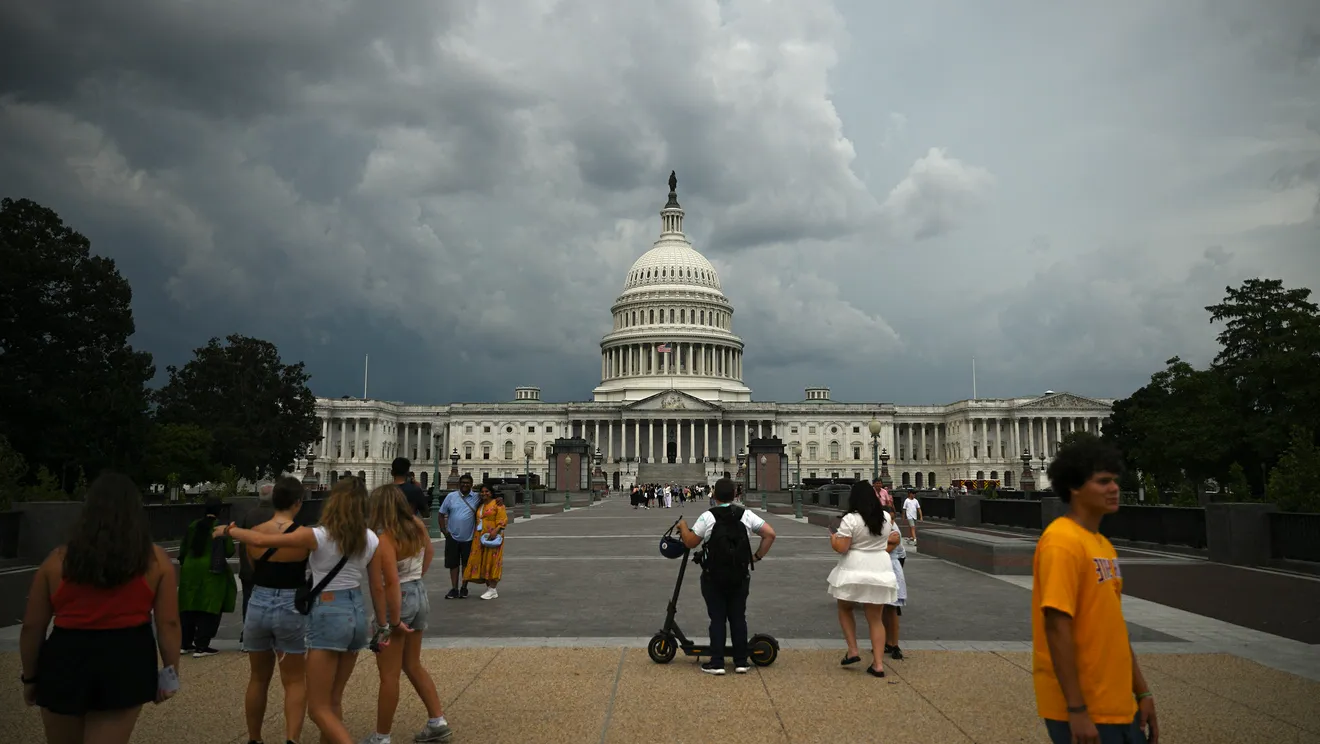The landscape of federal student loans in the United States is on the brink of significant transformation. Following intense negotiations and a decisive vote in both chambers of Congress, President Donald Trump’s “mega spending bill” has passed, awaiting only his signature to become law.
This comprehensive legislation, dubbed the “Big, Beautiful Bill,” is poised to enact far-reaching changes across various sectors, with a profound impact on millions of Americans. While it addresses areas like tax cuts and social programs, its provisions related to student loans are drawing particular attention and concern from current and prospective borrowers alike.
The bill’s passage, after a “full day of negotiations July 3 and a 218-214 House vote,” marks a critical moment for federal student aid. This nearly 900-page document is not just about making “2017 tax cuts introduced during his first term permanent.” Its scope is much broader, touching on numerous aspects of the American economy and social safety net. It introduces “narrow tax breaks for tips and overtime,” aims to “launch new benefits for businesses,” and notably “rolls back former President Joe Biden’s clean energy tax credits.”
More critically, from a social welfare perspective, it will “slash benefit programs like Medicaid, leaving nearly 12 million Americans uninsured” and “remove accessibility of the Supplemental Nutrition Assistance Program for 2 million people.” These extensive changes underscore the bill’s profound implications for everyday Americans.
However, the specific focus for student loan borrowers lies in the significant reshaping of federal education financing. President Trump, alongside the “Republican-majority House and Senate,” is fundamentally altering how students and their families access and repay educational debt. A key change involves “cutting the number of repayment plans available to borrowers.” Furthermore, a cornerstone of the previous administration’s student aid policy is targeted: “A Biden-era program that tailored payment requirements to the person’s income will be replaced with a new fixed-rate program.”
This shift is designed to “disadvantage lower-income families,” raising concerns about affordability and access to higher education for vulnerable populations. Those individuals “planning to continue their education beyond their undergraduate degree are slated to be impacted by new caps toward graduate, medical and law students.” The bill also directly “impacts how much parents can borrow to help their children pay for tuition.” These proposed changes suggest a significant reorientation of federal student loan policy, emphasizing fixed terms and potentially increasing the financial burden on borrowers.
New Borrowing Limits: Caps on Higher Education Loans
One of the most immediate and impactful changes introduced by the new spending bill concerns the imposition of stringent new caps on student loans, particularly for those pursuing advanced degrees. Historically, federal loan programs for graduate and professional students often allowed for borrowing up to the full cost of attendance, providing crucial financial support for expensive programs like medical school or law school. This bill fundamentally alters that paradigm, introducing specific lifetime limits that could dramatically reshape access to higher education for many aspiring professionals.
The legislation would enforce a “lifetime cap of borrowing $100,000 for graduate students.” This means that regardless of the length or cost of their master’s or Ph.D. programs, a student’s total federal loan amount cannot exceed this figure. For programs that can easily run into hundreds of thousands of dollars, such as certain science or arts programs, this cap will necessitate a significant reconsideration of funding strategies, potentially pushing students towards private loans or even reconsidering their educational paths entirely.
Even more substantial caps are being introduced for highly specialized and often incredibly expensive professional degrees. The bill sets a “$200,000 cap for medical and law school students.” These fields typically involve four or more years of post-undergraduate study, with tuition and living expenses often accumulating to well over the proposed cap. For example, a student attending a top-tier medical school could easily incur hundreds of thousands in debt. This new limit will create significant financial hurdles, potentially forcing future doctors and lawyers to bridge substantial funding gaps through private financing, personal savings, or other, potentially less favorable, loan options.
Beyond these specific dollar limits, the legislation also “reduces opportunities for deferments or forbearance.” Deferment and forbearance programs have traditionally offered temporary relief to borrowers facing financial hardship, allowing them to pause payments without accruing interest (in the case of subsidized loans during deferment) or to temporarily stop payments. Limiting these options could leave vulnerable borrowers with fewer safety nets during periods of unemployment, illness, or other financial crises.
Furthermore, the bill introduces “new limits on lending for part-time students.” This could disproportionately affect students who work full-time while pursuing their degrees part-time, as they might find it more challenging to secure the necessary federal funds, potentially prolonging their studies or forcing them to increase their work hours. These combined caps and restrictions underscore a move towards a more restrictive and less flexible federal student loan system.
Reshaping Repayment: Fewer Options and Higher Burdens
The landscape of student loan repayment is set to undergo a fundamental transformation under the new bill, with significant implications for borrowers, particularly those with lower incomes. The legislation is designed to drastically “shift” how individuals manage their student debt, primarily by “gutting loan forgiveness programs that have been in place for years” and profoundly “altering payment requirements that previously benefited disadvantage lower-income families.” This represents a departure from recent policies aimed at providing more flexible and income-sensitive repayment solutions.
Under the proposed changes, borrowers will find themselves with significantly fewer options for repaying their federal student loans. The bill consolidates the various existing plans into a stark choice of just two. One of these is the “standard repayment plan that allows borrowers to repay over 10 to 25 years based on their loan amounts regardless of income.” This traditional repayment structure offers predictability but can be burdensome for individuals whose incomes do not keep pace with their loan balances, potentially leading to financial strain or even default. Payments under this plan are fixed and do not adjust based on a borrower’s ability to pay.
The second option is a new program, provisionally named the “Repayment Assistance Plan.” This plan is designed to be “based on borrowers pay monthly payments between 1% and 10% of their discretionary income.” While it retains an income-driven component, the specifics of its structure are crucial. Compared to previous income-driven repayment (IDR) plans like the SAVE plan (discussed in detail later), this new “Repayment Assistance Plan” is likely to be less generous.
It could feature higher percentages of discretionary income required for payments, less flexible definitions of “discretionary income,” and potentially longer repayment periods before any remaining balance is forgiven. The intent appears to be to reduce the government’s exposure to loan forgiveness, placing a greater responsibility on borrowers to repay the full principal and interest, regardless of their financial circumstances over time. This reduction in repayment options and the shift away from more accommodating income-driven structures could significantly increase the financial burden on many federal student loan borrowers, especially those who rely on income-sensitive payments to manage their debt responsibly.
Impact on Parents: New Limits for PLUS Loans
Parents who wish to financially support their children’s undergraduate education through federal loans will also experience substantial changes under the proposed bill. The Parent PLUS Loan program, a critical resource for many families, is specifically targeted, introducing new limitations and restrictions that could alter how families finance higher education.
The bill explicitly “sets a $65,000 cap on Parent PLUS loans.” Parent PLUS loans are a type of “unsubsidized loan offered for parents aiming to support dependent undergraduate students.” Previously, these loans did not have an aggregate limit, allowing parents to borrow up to the full cost of attendance (minus other aid) for each child. The introduction of this $65,000 lifetime cap per student represents a significant reduction in available federal funds for parental borrowing.
This change could force families to seek alternative funding sources, such as private loans, which often come with less favorable terms, higher interest rates, and stricter credit requirements. For families without extensive savings or access to private credit, this cap could pose a serious barrier to affording higher education, potentially impacting their children’s ability to attend their desired institutions or even pursue a four-year degree.
Beyond the borrowing limit, a critical and potentially devastating change for Parent PLUS borrowers is the elimination of their eligibility for income-driven repayment programs. The bill states that “These loans will also no longer be eligible for repayment programs.” Historically, Parent PLUS loans, once consolidated, could be repaid under certain income-driven plans, offering flexibility for parents whose incomes fluctuated or who faced financial hardship.
The removal of this eligibility means that Parent PLUS borrowers will likely be restricted to standard repayment plans, which require fixed monthly payments regardless of the borrower’s income. This could lead to severe financial strain for parents, particularly those nearing retirement or experiencing reduced income, as they would be obligated to make substantial fixed payments without the safety net of income-based adjustments. The combined impact of borrowing caps and the elimination of repayment program eligibility makes Parent PLUS loans a much riskier and less flexible option for families in need of financial assistance for their children’s education.
The Future of SAVE: Program in Limbo
One of the most significant and immediately concerning aspects of the new bill for many existing federal student loan borrowers is its direct impact on the Biden-era SAVE (Saving on a Valuable Education) repayment plan. The SAVE plan, introduced as a more affordable and flexible income-driven repayment option, has enrolled millions of borrowers, offering lower monthly payments and more generous interest accrual rules. However, its future is now highly uncertain.
Currently, “the around eight million borrowers enrolled in Biden’s SAVE repayment plan will stay in limbo awaiting a judge’s decision about the program’s legality.” The SAVE plan has faced legal challenges, and while the courts deliberate, the new legislation introduces its own set of directives that will significantly alter the program’s trajectory, regardless of the judicial outcome.
The bill specifically “requires SAVE borrowers to find a new repayment plan between July 2026 and the end of June 2028.” This means that even if the SAVE plan were to withstand legal challenges, its existence as a standalone option for current enrollees is time-limited. Borrowers will be forced to transition to one of the two new repayment plans established by the bill: the standard repayment plan or the new “Repayment Assistance Plan.” This mandated transition period will create considerable administrative burden and uncertainty for millions of borrowers who have relied on the SAVE plan’s more favorable terms.
The consequences of failing to select a new plan within the specified timeframe are severe. The bill stipulates that “If they don’t after July 1, 2028, then they will automatically be enrolled in the Repayment Assistance Plan based on discretionary income.” This automatic enrollment, while providing a default option, may not be ideal for all borrowers. The “Repayment Assistance Plan” is widely anticipated to be less favorable than the existing SAVE plan, potentially leading to higher monthly payments, longer repayment periods, and less generous forgiveness terms.
This legislative intervention effectively unwinds a key policy of the previous administration, forcing millions of borrowers to adjust to less advantageous repayment conditions, regardless of their current financial situations or prior repayment strategies. The uncertainty surrounding SAVE’s future, coupled with the mandatory transition, creates a challenging environment for millions of student loan holders.
Who Remains Unaffected? A Look at Existing Borrowers
Amidst the sweeping changes proposed by the new spending bill, it’s natural for individuals with existing student loan debt to wonder how they will be impacted. The legislation’s provisions are primarily designed to shape the future of federal student lending, meaning that the most significant effects will generally be felt by a specific group of borrowers.
The new changes will “most likely impact new federal student loan borrowers.” This refers to individuals who take out federal student loans on or after the bill’s effective date, which is anticipated to be July 1, 2026, for many of the key provisions. For these new borrowers, the revised caps on graduate and professional loans, the limited repayment plan options, and the restrictions on Parent PLUS loans will apply directly to their new borrowing. They will enter a federal student loan system that is fundamentally different from the one that existed prior to this bill.
Conversely, the bill’s immediate and direct impact is generally less severe for “the more than 40 million Americans already in student loan debt.” For the vast majority of these existing borrowers, their current loan terms, existing repayment plans (with the exception of the SAVE plan as noted previously), and previously established eligibility for various programs are expected to remain largely unchanged for the loans they have already disbursed. This is often referred to as “grandfathering” provisions, where existing agreements are honored.
However, it is crucial to understand that “unaffected” does not necessarily mean “immune to all downstream consequences.” While the core terms of their existing loans may be preserved, subtle indirect impacts could still arise. For instance, the general reduction in federal support for future students could have broader effects on the higher education landscape, such as tuition adjustments or shifts in institutional financial aid strategies, which might indirectly influence existing borrowers down the line.
Furthermore, any changes to the overall economic environment or social safety net programs as a result of the bill could still have an indirect effect on current borrowers’ ability to manage their debt. But directly on their existing federal student loans, those who have already borrowed under previous rules are generally not subject to the new caps and the drastic reduction in repayment options, except for the specific mandate for SAVE plan enrollees to transition to a new plan by 2028. This distinction is vital for current borrowers to understand their personal exposure to the impending changes.








